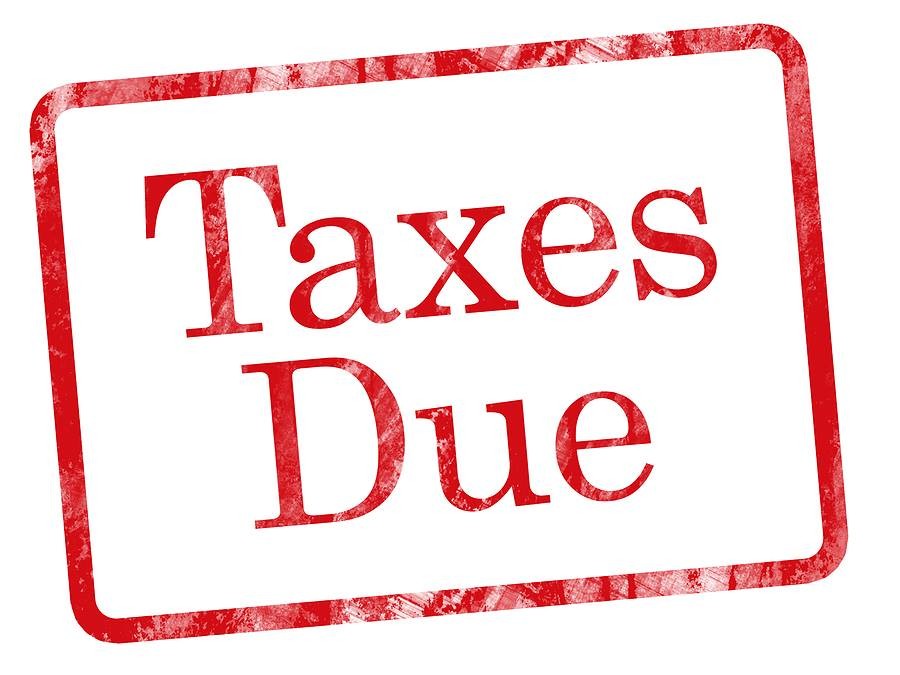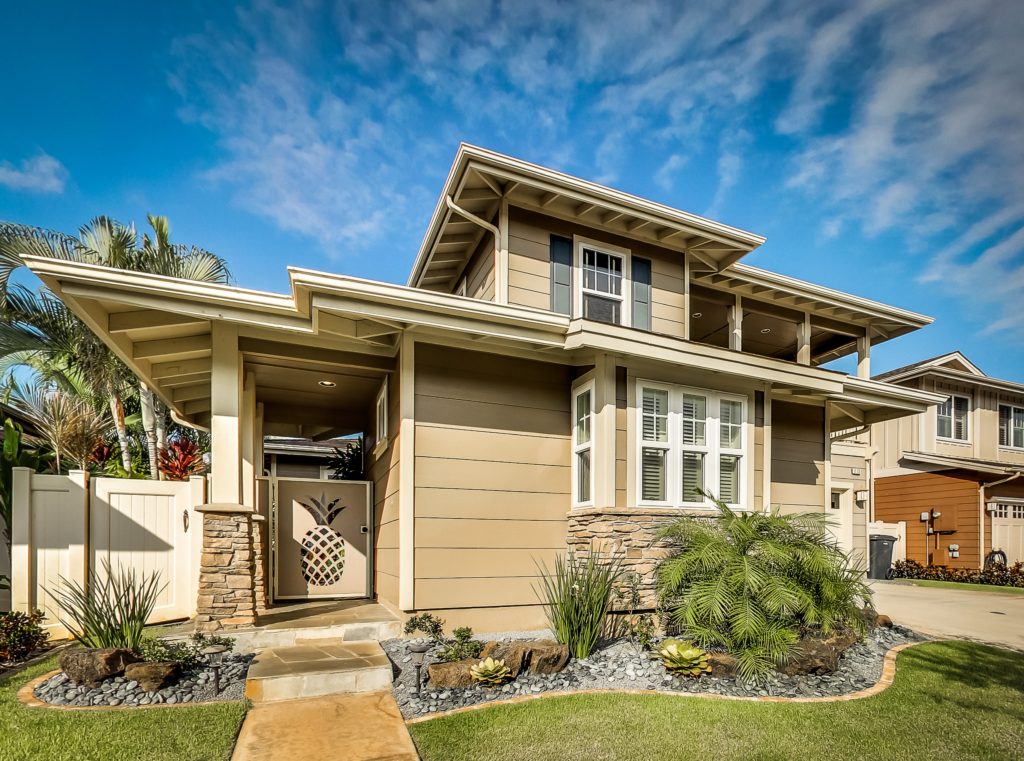The State of Hawaii recently released Real Property Tax Rates (Property Tax Rates) for the Fiscal Year 2020 – 2021.
The Property Tax Rates for Honolulu County (Oahu) are as follows:

Tax Rate per $1,000 Net Taxable
| Residential | $3.50 | |
| Commercial | $12.40 | |
| Industrial | $12.40 | |
| Agricultural | $5.70 | |
| Preservation | $5.70 | |
| Hotel & Resort | $13.90 | |
| Public Service | $0.00 | |
| Vacant Agricultural | $8.50 | |
| Residential A, Tier 1 | $4.50 | |
| Residential A, Tier 2 | $10.50 | |
| Bed & Breakfast Home | $6.50 |
What does this mean and how do you calculate property taxes? Find the assessed value of the home / property and divide that figure by 1,000. Then multiply that number by the Tax Rate and this would give you the approximate tax rate.
Another way to look at it would be to divide the Tax Rate by 1,000 and turning it into a percentage. Example: the Residential Tax Rate of $3.50 divided by 1,000 becomes .0035 or .35% which could then be multiplied by the assessed value of the property. Let’s look at a couple of examples. The median Single Family Home Sale Price in May, 2020 was $800,000. Multiplying $800,000 x .35% (the Residential rate) = $2,800 in Annual Property Tax. If you were looking at Agricultural Land that was assessed for the same value the Annual Property Tax would look more like: $800,000 x .57% (the Agricultural Rate) = $4,560.
I find the Residential A classification interesting. Residential A is essentially a home that an investor might own, or a second home. It is a residential property that does not have a Home Exemption, meaning it is not the owner’s primary residence. Someone who owns a residential investment property that is assessed at the same $800,000 as in the example above, the Annual Property tax would look like: $800,000 x .45% (the Residential A, Tier 1 rate) = $3,600 which is $800 more than the base Residential Rate. What happens if the assessed value of that same property goes up over $1,000,000? That’s when it falls into the Residential A, Tier 2 category and the tax rate goes from .45% to 1.05%. So if the assessed value of this property should go to $1,000,500 the Annual Property Taxes would go up to: $1,000,500 x 1.05% (the Residential A, Tier 2 rate) = $10,505.25
To recap, the Residential Property Tax Rates for Oahu are: the Tax Rate for your primary residence is 0.35% of the assessed value. If it is an investment property or second home valued at less than $1,000,000 the Tax Rate is 0.45% and if the property is an investment or second home valued at over $1,000,000 the Tax Rate is 1.05% of the assessed value. Perhaps a good thing is that Residential Rates did not increase. It appears the only Tax Rate that increased was the Hotel & Resort classification, which went from 1.24% to 1.29%.
I placed links below to the Real Property Tax Rates table as well a detailed Residential A Classification explanation from the State.
Real Property Tax Rates in Hawaii
Residential A Classification
Disclaimer: The author of this Blog is a Realtor, not a CPA nor Tax Advisor. Although I wrote this information as accurately as I could it is possible mistakes were made in the interpretation of the facts or in calculations. Therefore do not rely on this information to make purchase decisions but instead consult a tax, accounting or legal professional for advice.
When we started in Property Management, like most companies at that time, we used the Standard Property Condition Form provided by the Hawaii Association of REALTORS. At the time, the form was a four page handwritten fillable form with check boxes for each room of a home indicating the condition of walls, flooring, etc. We were never really comfortable with that form, mostly because it was difficult to write comments in the space provided describing a room’s condition. However, it was the “standard” on the island so we used it. I see the latest form is now eleven pages and seems like it might be a little easier to use. Below is a link to the latest form as of this writing. Feel free to download it if you’d like a copy for your use.
In 2014, with the improvement of cell phones, tablets and technology we found a rather oddly named alternative to the handwritten forms; Happy Inspector. We’ve been using Happy (as we now call it) since our trial and use it for all our inspections. We’ve never looked back at handwritten forms but have looked at a couple electronic alternatives. We didn’t like them as much, so have stuck with Happy.

Using Happy Inspector, we went from a four page form to an average twenty-three page inspection. The software allows us to complete the inspections on a phone, or tablet and have the tenant sign it electronically before sending it to the “cloud” for storage and/or downloading to our computers. Another BIG advantage is the ability to take photos of anything in the home and attach them to the inspection report. Of course we are also able to type as much information as needed into the reports to properly describe the condition of a home.
In preparation for writing this article, I logged onto the Happy website to look at our Dashboard and was surprised by the number of photos we have uploaded with our inspections. Since the Dashboard has been available, we have completed 150 inspections and uploaded over 39,000 photos. That’s an average of 260 photos per inspection. Seems we’re very thorough with photos (or perhaps just really like taking photos). Happy Inspector has allowed us to be much more thorough with our inspections. When it comes time for a tenant to move out of a home it is far easier for us to point out the condition of the home at the time they moved in and is great documentation for any damage that may have occurred to the home. This makes it easier and more equitable to charge tenants for any damage.
So, if you decide to work with Ola Properties for management of your rental home, you can count on us using Happy Inspector and completing very detailed Property Inspections. Below is a link to one of Happy Co’s sales pieces describing the software in more detail.
Finally, here is a link to the website for the people who make Happy Inspector Happy Co if you want to check them out.
We realize that not everyone feels they need or want a full-time Property Manager for their Rental Home. Therefore we now offer our Lease Only Option for Homeowners.
Who is this program for?
- Landlords who want to manage their own home with direct interaction with the tenant
- Landlords who need marketing and tenant screening services
- Landlords who have already identified a tenant and need a professional lease agreement
- Landlords who can perform their own rent collections
- Landlords who can perform their own maintenance
- Landlords who are not sure if they want or need a management company
How much does this program cost?
One half of one month’s rent
Is there a leasing commission paid to other Realtors?
We don’t often need to offer leasing commissions to other Realtors but if we should, Ola Properties will pay the leasing commission out of our payment.
What do you do in this program?
1) Assess the Rental Home and recommend a potential monthly asking price
2) Market the home on the HiCentral MLS, our website and numerous other sites we market on, including HotPads, Trulia, Zillow and others
3) Use Professional Photos and Videos for Marketing Your Home
4) Collect and Screen Applications
5) Discuss Applications with Owner for Review
6) Draft and Execute a Lease Agreement
7) Arrange for the tenant to move into the home
8) Turnover all tenant funds and contact information to Owner
What if I want Full Service Management later on?
We get this question a lot. In this program, the lease can be converted to one of our Full Service Management agreements at anytime. Any fees paid up to that point will be credited towards the owner.
Renting out a property as a vacation rental is a business, and, as in any business, it comes with certain risks. Your tenant can break your new stove that you just put in to attract the gourmand tourist. A pipe can burst, leaving you with a soggy floor and an unhappy renter. There is no cure for the stress of these situations, however the financial aspect of them can be eased by having the right kind of insurance.
Landlord Insurance
Landlord insurance is different from homeowner’s insurance in that it is often more comprehensive. It will cover personal property that the landlord puts in the rentals for the tenants to use. Say you furnish your rentals with beds and couches and your tenant’s kids jump on them, ruining the springs- landlord insurance should cover that. It will also cover your property against the usual disasters such as floods and earthquakes.
But it can be more than that. Landlords face the problem of losing income if their home is damaged, so this type of insurance frequently comes with the option of coverage for what you would have gotten by renting the home out for up to a year if something happens to the house. Perhaps more importantly, it can also cover legal liability. If you spring for this option, the insurance will cover the costs of battling tenants who take you to court.
As you can imagine, there are some limits to what landlord insurance applies to. As an example, the building you are renting out has to be one structure, such as a townhouse or a single family dwelling, and not take in more than 4 families at a time. (If it holds more than 4, it’s an apartment building and that is a whole other can of worms.)
Renter’s Insurance
Then there is the insurance that your tenant should have. Homeowner’s and renters insurance focuses more on the things that a renter brings to the vacation rental. Most people bring a few items with them that they spent quite a bit on and renter’s insurance is a safeguard against those favored things getting damaged or lost. Landlord insurance won’t cover those items, but you can ask if a potential tenant has renter’s insurance. If they do, it can make it more likely that, even if something bad happens to their private property during your tenant’s stay, they will feel good about their time at your property.
Where Do You Find This Insurance?
Finding the right landlord insurance for your rental property is all about communicating with your insurance provider. Since it covers more, it can be a little more expensive than simple homeowner’s insurance, and there are a couple of factors that will change the price. Your credit score, location, claim history and building type can all come into play, so you want to shop around and talk with your broker to figure out what your particular property needs.
There are some websites that provide quotes from a variety of companies, such as Hawaii Landlord Insurance Qts, but many insurance companies that provide home insurance, such as State Farm and Farmers, can also accommodate landlord insurance.
If you are renting out a vacation property, insuring it against future mishaps is a smart move. Be sure to discuss it with your insurance carrier.
Ewa Beach Long Term Rentals
Oahu, Hawaii is not the largest island in the Pacific Rim, yet it is vital to the tropical state. Oahu is home to the state capitol city of Honolulu. The Leeward coast of the island is less popular with visitors but is home to many of Hawaii’s residents. One such residential area is the town of Ewa Beach.
Single Family Home in Ewa Beach, HI
Small but Close to the Big City
Ewa Beach is a small community but has experienced rapid growth in recent years. The town is located approximately 20 miles from Honolulu, near the tip of the island. This close proximity to the big city makes it a great residential area for those who need to commute to the city for work or business and may be a contributing factor in its continued growth.
A Lot to Offer
Ewa Beach may be a small dot on the Hawaiian map, yet it has a lot to offer to residents and visitors alike. This tiny town with a population of just 14,955 (according to 2010 census) and is approximately 1.9 square miles in size. Inside this cozy community are 22 schools, a hospital, grocery stores, restaurants, a shopping center, parks with playgrounds, and of course, the beach.
The Kamakana Shopping Center at Ali’i brings sophistication to the area with the famed stores, Sephora and Macy’s. In addition, there is a state-of-the-art movie theater, Olino by Consilidated, which has comfortable reclining chairs. As for restaurants, a local favorite is the Eating House 1849. Buffalo Wild Wings, California Pizza Kitchen, and The Cheesecake Factory are also among the other restaurants available.
A Little Bit of History
Ewa Beach has a history that goes way back. It began as a large plantation during the brief reign of Queen Lili’uokalani, the first and only queen, and subsequently the last of the Kanehameha dynasty. During the late 1800s, Queen Lili’uokalani abdicated the throne after losing power to America. After that, the plantation was managed by W.R. Lowie. Since then, Ewa Beach has been a very important part of Hawaii’s culture, along with its economy and politics.
Head to Ewa
Most of the local residents along the southern shore of Oahu use the term Ewa as a reference for heading towards the shoreline. Other local terms used in a similar fashion are: mauka, towards the mountains in a generally northward direction; makai, towards the ocean in a generally southern direction; and Diamond Head (or Koko Head) refers to heading along the shoreline in an eastwardly direction.
Head for the Island
When looking for assistance with planning to relocate to Ewa Beach, look no further than Ola Properties. A local property management company, we are here to assist with locating a home, as well as managing the transactions afterwards. Our website offers online payment collection and a place to submit maintenance requests. Our services benefit both homeowners and tenants. For more details, call Ola Properties today!
Ko Olina on the Leeward Coast
Long Term Rentals on Oahu
Sunshine, sand, surf, and leis are all a part of beautiful Hawaii. Commonly referred to as “The Gathering Place,” Oahu truly is a wonderful place to visit as well reside. From Pearl Harbor to the North Shore and the famed Waikiki, Oahu is the place to be.
Aloha!
Welcome to the island of Oahu, the bustling center of Hawaii. Home to the state’s capital city of Honolulu along with other historic and important landmarks, this third-largest inhabited island has more to offer of everything than all of the other islands combined. The multitude of opportunities for shopping, dining, entertainment, as well as professional and government offices draws in the largest number of visitors to the island.
Living in Oahu
Many people think of Hawaii a great place to vacation, but it is also a great place to live. Besides the pleasantly mild temperatures, another fabulous reason to take up residence in Oahu is because it has the lowest unemployment rate at approximately less than 3% of the population. A possible reason for this low rate is the fact that job opportunities are numerous and include everything from labor to government to entrepreneurial.
Hawaii is prepared for families and their education. Oahu has four public school districts and nine complex areas which contain two or three complexes each. A complex contains a high school, regional elementary, and middle schools. With the amount of school districts and campuses, it is important to verify which school district the home you are looking at is in.
Did You Know?
A little-known fact about the state of Hawaii is there are actually 136 islands that make up this tropical piece of the US. Out of the 136, only seven have people living on them. The remaining 129 are small islets, atolls, and coral reefs.
It is believed that Oahu was originally created when two shield volcanoes, which are currently inactive, erupted. The remains of these two extinct volcanoes are visible and known as the Ko’olau and Wai’anae Mountain ranges. These run parallel along the eastern and western coasts of the island.
Home Sweet Home
When considering relocating to Oahu, some may consider a long-term rental versus purchasing. Hawaii has some of the highest closing costs and more expensive home prices, thus minimizing the long-term return on the investment. For those considering relocating from the mainland to the island, choosing a rental could result in less move-in costs and could potentially have some perks.
Professional and Courteous
When looking for a property management company to assist you with locating your next Hawaiian home, look no further than Ola Properties. For over 15 years we have used our professional expertise in a courteous and friendly way to assist homeowners and tenants. Our management of home maintenance and responsiveness to emergency maintenance requests, along with our interactive website, eases the mind of both homeowners and tenants. For a complete listing of our available properties and further information, browse our website or call us today!
Owning a rental property can be an exciting and profitable way to generate a source of income. However, the ins and outs of actually running such a property can be confusing for potential owners. In particular, whether or not a home warranty is necessary can be a tricky decision to navigate. Understanding what a home warranty is, the benefits and drawbacks of having one, and a few deciding factors can help make the choice a bit simpler.
What is a home warranty?
A home warranty is essentially a home services contract which pays for necessary repairs and replacement of appliances that can’t be repaired. Typically, a basic policy will cover home appliances, heating, cooling, plumbing, and electrical systems. On the other hand, a premium system will also cover roofs, pools, wells, lighting systems, and lawn sprinkler systems. Home warranties generally run for a one year period.
What are the benefits of a home warranty?
While homeowners insurance covers things that could happen, such as floods, earthquakes, etc., a home warranty covers things that will inevitably happen, such as appliance breakdowns. Having a home warranty means these breakdowns can be resolved quickly and efficiently, with minimal out of pocket expenses for the homeowner. Owning a rental property is a large responsibility and a home warranty can provide some much needed peace of mind. It is also possible that the costs of a home warranty could count as operating expenses and thus be tax deductible. Consult with your tax professional to know for sure.
What are the drawbacks of a home warranty?
While home warranties can certainly be useful for rental property owners, there are some negatives as well. In some regions, providers prefer to work with private homeowners as opposed to landlords and some companies even require payments to be made in person, which can be difficult if you don’t reside in the covered property. For this reason, it is essential that you obtain confirmation your provider of choice is willing to cover rental properties.
Should you purchase a home warranty for your rental?
So, is a home warranty right for you? Here are a few key considerations to help make your decision.
- How old is the property?Brand new homes are less likely to have problems in the first several years and new appliances are likely covered by manufacturer warranties. A property a decade or more older, however, will be more prone to the type of breakdowns covered by a home warranty.
- What do your finances look like? Do you have an emergency fund that can supplement maintenance costs out of pocket? If not a home warranty might be a good idea – providing you find a warranty you can afford without hardship.
Are you a local landlord? If you live in the same area as your rental property, working directly with repairmen can be simple and cost-efficient, but if you don’t live within a short distance from your rental a warranty might make coordinating repairs simpler.
Owning rental properties is a fantastic way for homeowners to keep their properties utilized. A great source of passive income for those who outsource management, renting properties have many advantages. However, there are also many issues and concerns that can arise with this process. One hot topic is regarding whether or not to allow pets to live in a rental home. While there are certain disadvantages, there are also advantages. Here are the positive and negative aspects that come along with allowing pets in your rental property.
Advantages:
- The rental home will appeal to a higher number of tenants. By allowing pets into your property, you will have a larger market share on potential renters. Depending on the demand in your area, this may be critical to ensuring your home stays rented. Since up to 50% of renters own pets, this is a great option to make properties more appealing.
- Pets provide justification for higher rent and security deposit. Due to the nature of pet ownership, tenants are willing to pay a higher rent and security deposit to keep their animals with them. As such, landlords will collect a larger profit on their rental properties.
- Pet owners are often responsible tenants. Pets are a large responsibility, and many owners are aware of this. Their ability to care for their pet is indicative that they will likely be more responsible than some tenants. Furthermore, pet owners are often cognizant of taking good care of the property to avoid paying unnecessary damages caused by their pet.
Disadvantages:
- Pets can cause additional damage. While many pet owners are responsible tenants, pets can still cause additional and often unintentional damage. For example, dog claws can scratch up hardwood floors quite easily. If you are very concerned about maintaining the state of your home, pets may not be the best option. Either way, ensure you document the state of the property thoroughly before renters move in.
- Pets can be a liability if they attack or disturb neighbors. An uncommon but potential scenario may occur with a tenant that has a poorly behaved animal. If the animal is aggressive, unfriendly, or even just loud, the burden on the neighbors can quickly become a problem for the property owner. Ensure you set clear guidelines with your tenants regarding acceptable behavior, and be clear with your fellow residents that you intend to allow animals to live in the home.
As noted above, there are a number of pros and cons to allowing pets into your rental properties. If you do determine that it is the right move, ensure that you consult with an attorney and your insurance company. Focus on protecting yourself by ensuring you have the correct verbiage in the lease and that your property is covered appropriately by the insurance company. While it is not the right choice for everyone, opening your rental property up to pets can be a great opportunity when executed correctly.




